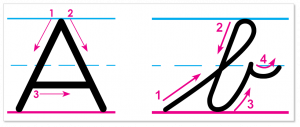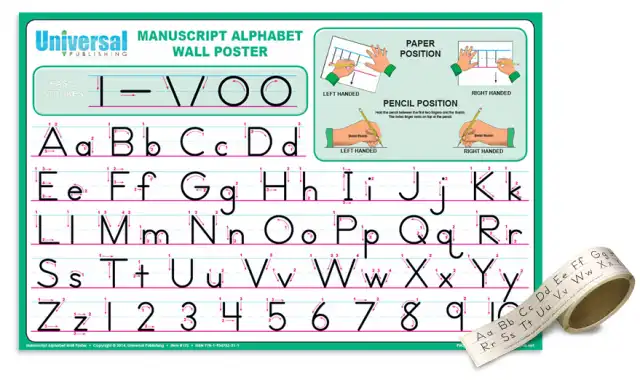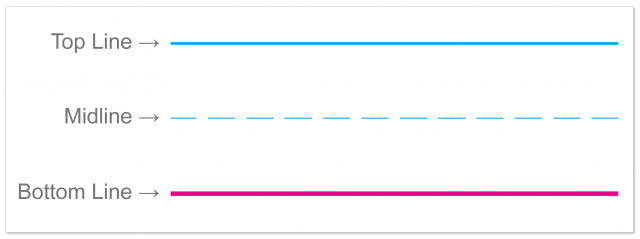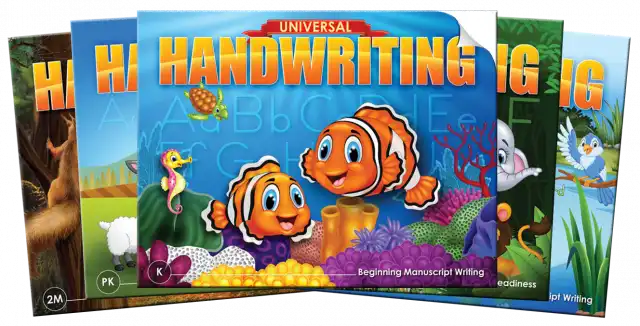
The Benefits of a School-Wide Handwriting Curriculum
When handwriting instruction expert Thomas Wasylyk speaks at professional development workshops, he almost always begins with the same topic: the importance of a school-wide handwriting curriculum.
“Getting all of your teachers on the same page is essential to successful handwriting skill development,” he says. “That way, the skill is reinforced from class to class, from grade to grade. You’re not reinventing the wheel every year.”
A school-wide handwriting curriculum ensures that students receive consistent instruction from grade to grade. When teachers from all levels are on the same page, students are able to progress and build on what they learned the previous year.
This positively impacts students’ handwriting development because they will always be looking at the same letter models, practicing the same letter formation, and using the same handwriting terminology.
There are several elements of handwriting instruction to consider when planning your school’s handwriting curriculum:
1. Alphabet
The first thing that a school should decide is which alphabet, or handwriting style, will be taught. This is SO. VERY. IMPORTANT! If students learn to write D’Nealian letters in kindergarten, ball-and-stick manuscript in first grade, and the cursive alphabet in second grade, they never have the chance to master any of these styles. They’re essentially starting all over in each grade.

When students learn different styles of handwriting from grade to grade, they may not excel at any of them. However, if students learn the same style from kindergarten through grade two, they are much more likely to master that particular style.
2. Letter Formation
Once you’ve settled on an alphabet, it’s also important to consider how those letters are made. For example, will you teach students to make the lowercase d with a continuous stroke, or to make a circle, lift, and then make the line?

A simple way to keep instruction consistent is to select a handwriting program to use across all grades. Doing so will ensure that students learn the same letter formation each year.
Some handwriting programs also include an animated alphabet to further reinforce correct letter formation. (Our AlphamationPlus handwriting teaching tool is free for teachers using our workbooks in their classrooms.) The animated alphabet shows students how to form the letter, which they will then practice in their books.
3. Support Materials
As students learn manuscript or cursive writing, they may need help remembering how to make the letters. Near-point and far-point references such as wall strips, wall charts, and desk strips should all show the same letter models.

That way, no matter which classroom or grade students are in, they will have accurate, consistent letter models to reinforce their handwriting.
4. Terminology

The terminology used during handwriting instruction must also be consistent year after year. If the kindergarten teacher calls the top writing line the sky line, the first-grade teacher calls it the roof line, and the third-grade teacher calls it the headline, students will have to learn this new terminology each year. The same is true for the names of the strokes (will you call a vertical stroke the top-to-bottom stroke, flagpole stroke, or stick stroke?) and letters (is it a lowercase w, a small w, or a baby w?).
Using workbooks from the same handwriting program will help with this, since each book within a program will use the same terminology. However, it’s important for the teacher to reinforce this verbally during the lesson (and whenever the opportunity arises throughout the day!).
5. Standards
Teachers in all grades must set high standards for handwriting – and those standards shouldn’t be restricted to the handwriting lesson. Handwriting is a skill that students use in their classes every single day. However, if students feel that the quality of their handwriting doesn’t matter outside of their handwriting lessons, they won’t make an effort to improve it.
Remind students in every class throughout the day to be mindful of their handwriting. Students will quickly become accustomed to the expectation of neat handwriting in all of their classes, and living up to this standard will become second nature. You can even take it up a notch and give dual grades on assignments: one for the assignment itself and one for the quality of the handwriting.
Adopting a school-wide handwriting curriculum goes a long way in reinforcing handwriting skill development. Your students will learn handwriting more easily and effectively with this consistent, sequential approach!




